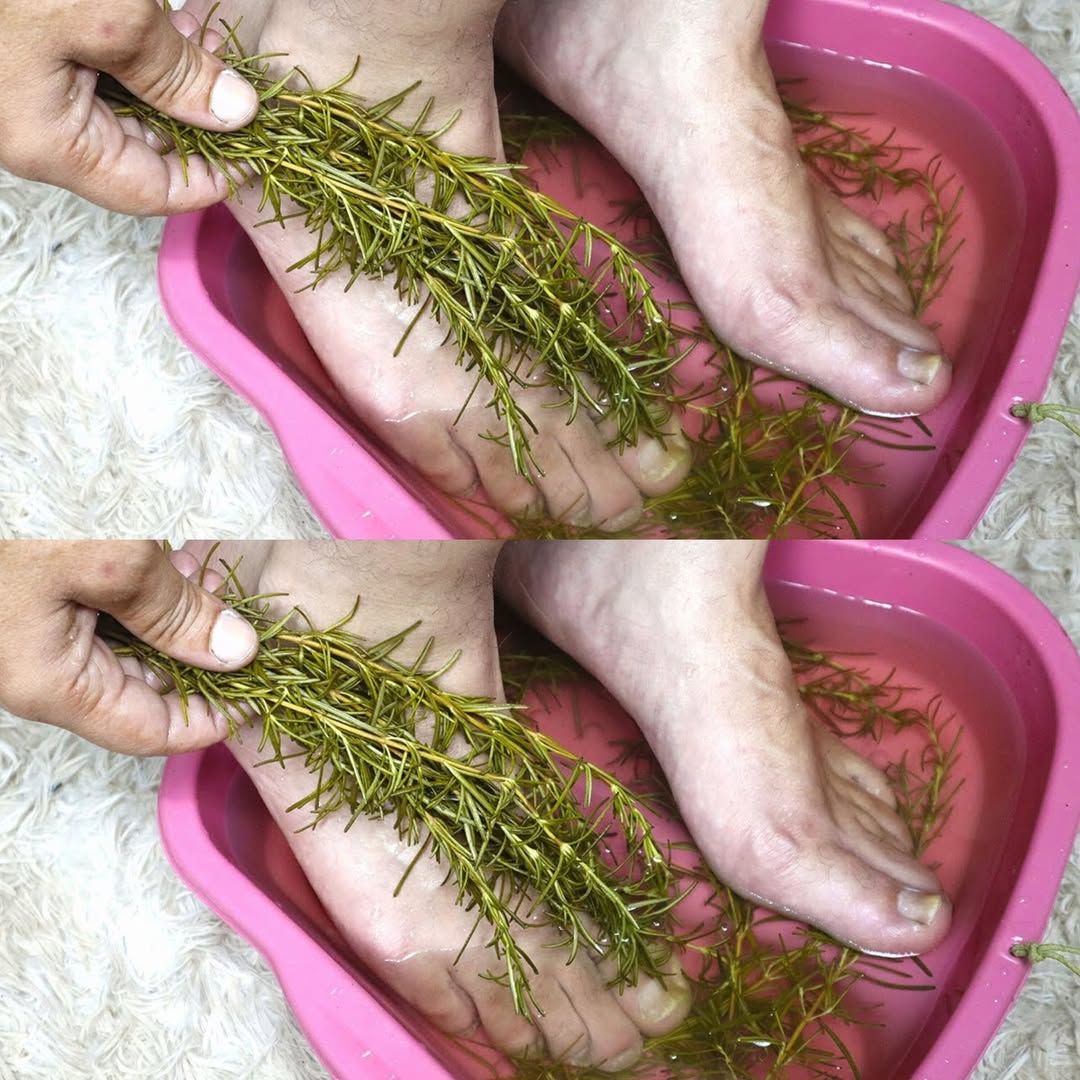Ingredients:
- Fresh rosemary leaves (or dried rosemary)
- Hot water
- Epsom salts (optional, for additional muscle relaxation)
- Essential oils (optional, like lavender or peppermint, for extra relief)
Steps:
- Prepare the Rosemary Infusion:
- If using fresh rosemary, take about 1-2 handfuls of rosemary leaves and roughly chop them to release their oils. If using dried rosemary, use about 2 tablespoons.
- Boil 4 cups of water and pour it over the rosemary in a heatproof bowl or basin.
- Let the mixture steep for about 15-20 minutes, allowing the rosemary’s beneficial compounds to infuse into the water.
- Optional: Add Epsom Salt:
- While the rosemary is steeping, add half a cup of Epsom salts into the hot water. Epsom salts contain magnesium, which can help relax muscles and reduce inflammation.
- Stir to dissolve the salts completely.
- Prepare for the Soak:
- Once the rosemary infusion is ready, strain out the rosemary leaves using a fine mesh strainer or cheesecloth, leaving only the rosemary-infused water.
- Ensure the temperature is comfortable for soaking. It should be warm, not too hot to avoid skin irritation.
- Soak Your Feet or Joints:
- For foot pain: Submerge your feet in the rosemary-infused water. Soak for about 20-30 minutes, gently massaging your feet to enhance blood circulation.
- For joint pain: If you experience pain in your knees, elbows, or other joints, soak a cloth in the rosemary water and apply it as a compress to the affected area. Hold the cloth on the joint for about 20-30 minutesfor optimal relief.
- Optional: Add Essential Oils:
- For an extra boost, add a few drops of peppermint or lavender essential oil to the water. These oils are known for their pain-relieving and soothing properties, enhancing the rosemary’s effectiveness.
Additional Tips for Maximum Benefit
- Consistency: For chronic pain relief, repeat the rosemary soak 2-3 times per week to maintain ongoing relief.
- Hydration: Drink plenty of water during and after your soak to help flush out toxins and keep your body hydrated.
- Gentle Stretching: After soaking, gently stretch the affected joints or feet to improve flexibility and mobility.
Conclusion
A rosemary soak is a natural and effective way to relieve joint and foot pain. Whether you’re dealing with arthritis, sore muscles, or general fatigue, this soothing remedy can bring much-needed comfort. Rosemary’s anti-inflammatory properties, combined with the relaxing benefits of Epsom salts and essential oils, make this soak a wonderful option for self-care and pain relief.
Give it a try the next time you’re looking for a way to relieve aches and stiffness naturally! If you need more remedies or tips for joint and muscle care, feel free to ask!
